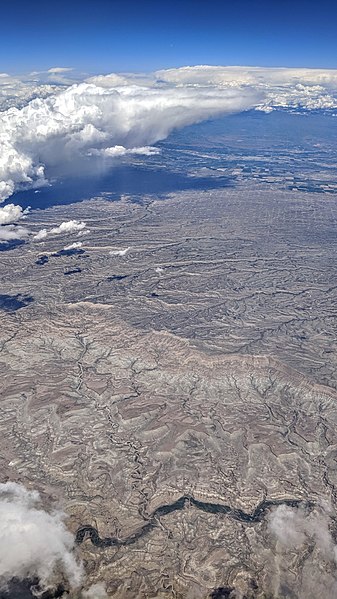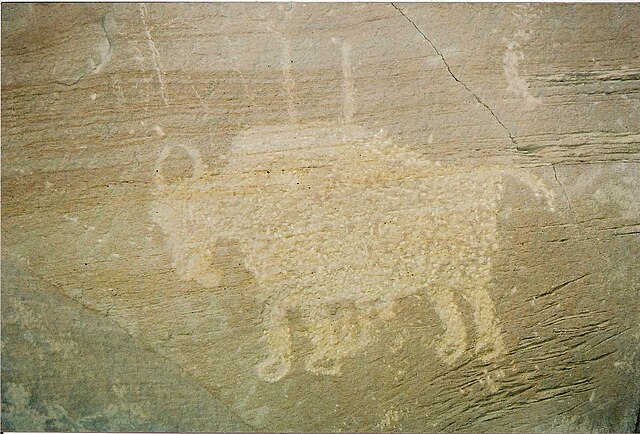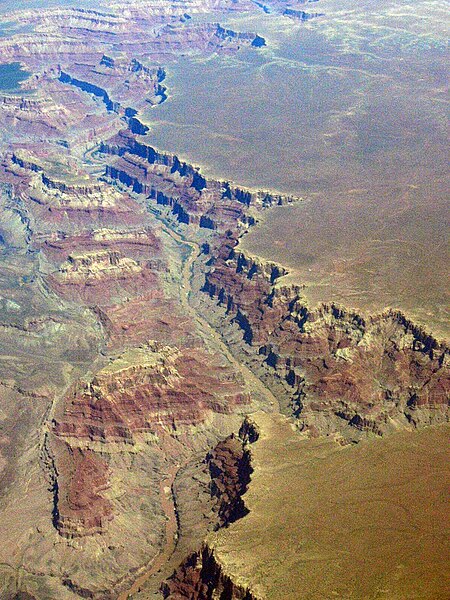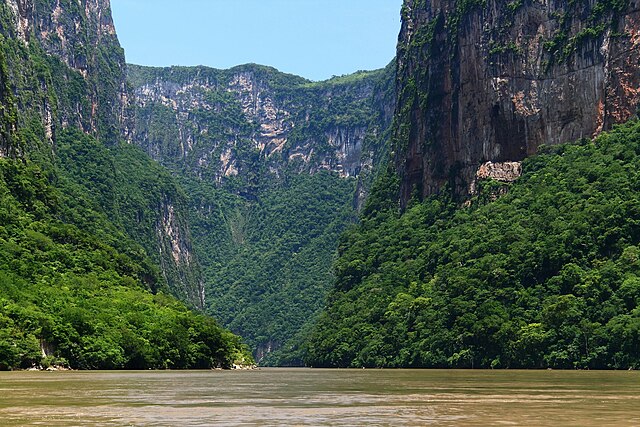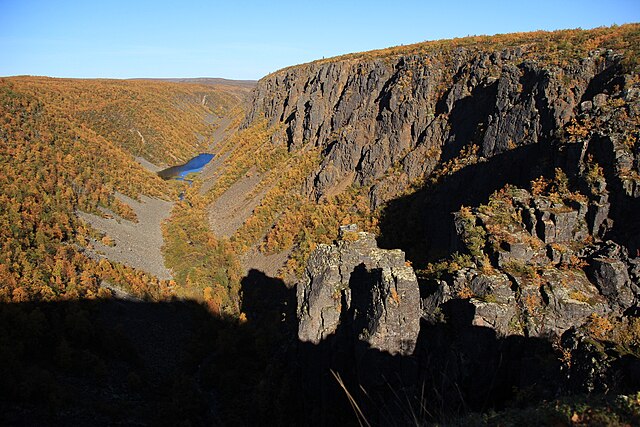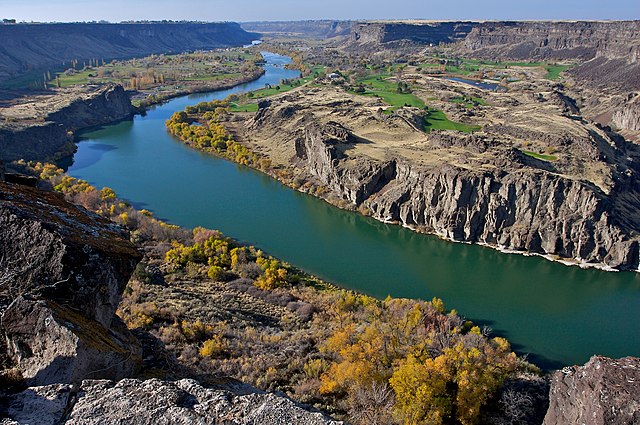Ninemile Canyon is a canyon, approximately 40 miles (64 km) long, located in Carbon and Duchesne counties in eastern Utah, United States. Promoted as "the world's longest art gallery", the canyon is known for its extensive rock art, most of it created by the Fremont culture and the Ute people. The rock art, shelters, and granaries left behind by the Fremont make Ninemile Canyon a destination for archaeologists and tourists alike.
The Daddy Canyon area of Ninemile Canyon, November 2007
Ninemile Canyon (the dark green area at the bottom) at North Franks Canyon. An array of natural gas wells is visible in the distance, May 2019.
The famous Cottonwood Panel, also called The Great Hunt, May 2006
The prints under this bison's hooves indicate Ute origin, November 2007.
A canyon, gorge or chasm, is a deep cleft between escarpments or cliffs resulting from weathering and the erosive activity of a river over geologic time scales. Rivers have a natural tendency to cut through underlying surfaces, eventually wearing away rock layers as sediments are removed downstream. A river bed will gradually reach a baseline elevation, which is the same elevation as the body of water into which the river drains. The processes of weathering and erosion will form canyons when the river's headwaters and estuary are at significantly different elevations, particularly through regions where softer rock layers are intermingled with harder layers more resistant to weathering.
The Grand Canyon, Arizona, at the confluence of the Colorado River and Little Colorado River.
Sumidero Canyon, Mexico
Kevo Canyon in Utsjoki, Finland
Snake River Canyon, Idaho


